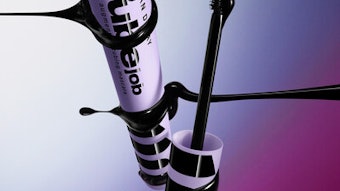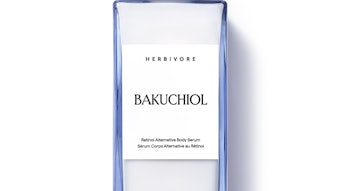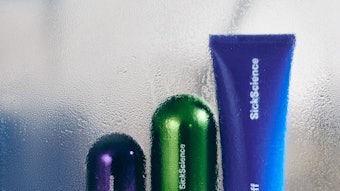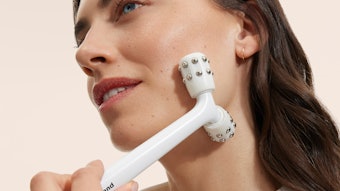According to Kline & Company research, the surge in consumer interest in, and adoption of, natural personal care products around the globe has driven outstanding growth in this segment of the market even as the overall industry has posted lukewarm results. While this story may already be well-documented, new research reveals that this little-red-sports-car of the consumer products industry will continue to pull ahead of the pack with stellar growth expected in key emerging markets.
Although not immune to the downturn in the global economy, the natural personal care market seems to have recovered more quickly than other segments, outpacing overall industry growth in all four major market regions. As the naturals movement regains momentum, unprecedented growth in some unexpected locations may not only continue to outpace overall industry growth, but also provide significant opportunities for both regional and global players to capitalize on the double-digit surge expected over the next five years.
Burgeoning in Brazil
Despite its ranking behind Asia and Europe as the third largest market for natural personal care products, the Brazilian market for naturals has ballooned at a 20% compound average growth rate (CAGR) since 2005. Despite an economic crisis that saw the nation’s GDP slide backwards by 0.2%, growth in naturals continued at a double-digit pace, making it one of the fastest growing markets in the world. Part of this growth can be attributed to the heavy influence of local giants Natura and O Boticário, which together command an overwhelming majority of the market share.
However, as the industry moves toward more natural formulations, there remains room for other players, especially those who can offer consumers a wider selection of truly natural products. The richness of Brazil’s biodiversity, particularly the flora of the Amazon region, is one of the key drivers in the growth of this segment, with many well-known ingredients already being explored for their cosmetic properties. The increasing supply of locally sourced raw materials also makes natural products more affordable and accessible for consumers.
Belief in natural remedies is already a well-ingrained aspect of Brazilian culture, where herbs and plants have long been widely used for medicinal and therapeutic purposes. This cultural acceptance makes it easier for brand owners to make the natural “pitch” to consumers, who largely already appreciate the benefits. Meanwhile, the rising middle class has boosted overall cosmetics and toiletries growth, priming the market for naturals to blossom.
With large competitors such as Unilever, Procter & Gamble, Avon, and L’Oréal already entering this segment on a global basis to diversify their existing product lines and meet the new demands of consumers, no doubt the local and regional players will see increasing competition in the coming years.
Asia Continues Climbing
Buoyed by a longstanding tradition of herbal remedies, Asia remains the largest market for natural personal care in the world, but now ranks second to Brazil in its pace, posting double-digit growth in 2010. Here, truly natural formulations hold a larger share at nearly one-fourth of the market, but growth in natural-inspired products is gaining strength as consumers demand mass products at lower prices.
Interestingly, the market for naturals in Indonesia is well-established, dominated by multinationals like Unilever, which has been on the ground there for more than two decades. Indonesian consumers seem to follow Western trends, despite the largely rural population, with the foreign origin of a brand commanding priority as a status symbol over its natural positioning. In contrast, truly natural products account for about one-third of the total market in India, which ranks second in the region behind China in terms of overall naturals growth. The competitive pricing of domestic brands and a strong belief among consumers in the medicinal properties of ayurvedic formulations are driving growth in the segment.
Also poised for double-digit growth, the market for naturals in Asia is expected to surge by a nearly 14% CAGR through 2015, buoyed by rapidly increasing urban population and greater awareness of natural products, especially in China, India, and Indonesia. Renewed interest for natural products—and a change in the perception of naturals from that of cheap alternatives to mass brands—is creating healthy competition and encouraging domestic brands to invest in research and development to improve product quality. The dominance and wide acceptance of herbal natural products in China and India will ensure ongoing demand in the natural segment.
Renaissance in Russia
Despite a deep economic downturn over the last two years, the natural personal care market in Russia enjoyed a growth rate significantly better than the country’s overall lackluster economy. Here, direct sales has emerged as a leading channel, offering low- and medium-priced natural cosmetics to meet the needs of cash-strapped Russians, both from an affordable pricing perspective and as a supplemental income opportunity. As the natural trend continues its slow but steady uptick, the Russian market provides plenty of potential for growth as consumers are increasingly attracted to new trends and novelties and embrace the natural and/or organic lifestyle.
U.S. Upswing
In the supercharged natural personal care industry, the U.S. market has shown the most significant impact of the prolonged economic recession. However, the real story here seems to be the surge in truly natural products, which shot up more than 20% over the past year, while natural-inspired products inched up just over 4%. One of the leading factors behind the growth of truly natural products is product reformulations. Marketers are reformulating their natural-inspired products to fit more within the truly natural segment. Furthermore, some of the leading marketers of what Kline defines as truly natural personal care products, including Burt’s Bees (Clorox) and Tom’s of Maine (Colgate-Palmolive), have succeeded in expanding their product lines in mass market retail outlets such as Wal-Mart, Target and drug stores around the country, which has played an important role in the growth of the truly natural segment.
Around the globe, consumers have displayed ever-increasing interest in natural products, which will continue to push worldwide growth into double-digit territory—a welcome respite for diversified multinational manufacturers reeling from lackluster performance in the overall beauty market. The key to leveraging this growth in specific regions is to remain mindful of the nuances and unique characteristics in each market. While stellar growth may be the universal condition, specific consumer demands and other drivers in each region will dictate the best course of action to capitalize on pockets of opportunity.
Nancy Mills is industry manager, consumer products, at Kline & Company.










